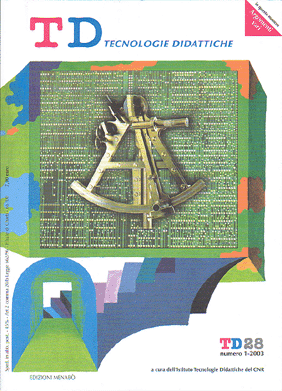The Martyrdom of Arpino as an object of research and teaching tool
Main Article Content
Abstract
Article Details
Section
Authors who publish with this journal agree to the following terms:
- Authors retain copyright and grant the journal right of first publication with the work simultaneously licensed under a Creative Commons CC BY 4.0 Attribution 4.0 International License.
- Authors are able to enter into separate, additional contractual arrangements for the non-exclusive distribution of the journal's published version of the work (e.g., post it to an institutional repository or publish it in a book), with an acknowledgement of its initial publication in this journal.
- Authors are permitted and encouraged to post their work online (e.g., in institutional repositories or on their website) prior to and during the submission process, as it can lead to productive exchanges, as well as earlier and greater citation of published work (See The Effect of Open Access)
References
Bruckman A. (2002), The Future of E-Learning Communities, Communications of the ACM, XLV, n.4, p. 60-63.
Bunzel J. (a cura di) (2001), Neue Konzepte der Handschriftenerschließung. Informationssysteme zur Erforschung des Mittelalters und der Frühen Neuzeit (Gruppe ‘Wissenschaftliche Literaturversorgungs - und Informationsysteme’), Deutsche Forschungsgemeinschaft, Bonn. http://www.dfg.de/foerder/biblio /download/handschriften.pdf
Calvani A., Rotta M. (1999), Comunicazione ed apprendimento in Internet, didattica costruttivistica in rete, Erickson, Trento.
Cartelli A. (2002), Web Technologies and Sciences Epistemologies, in Proc. of Informing Science + IT Education Conference, Cork (Irlanda), pp. 225-239. http://ecommerce.lebow.drexel. edu/eli/pdf/Carte203Webte.pdf
Cartelli A., Palma M. (2002), Towards the Project of an Open Catalogue, in Proc. of Informing Science + IT Education Conference, Cork (Irlanda), pp. 217-224. http://ecommerce.lebow.drexel. edu/eli/pdf/Carte188Towar.pdf
Jonassen, D. H. (1995), Supporting Communities of Learning with Technology: A Vision for Integrating Technology with Learning in Schools, Educational Technology, 35 (4), pp. 60-63.
Hiltz S. R., Turoff M. (2002), What Makes Learning Networks Effective?, in Communications of the ACM, XLV, 4, pp. 56-59.
Lévy P. (1996), L’intelligenza collettiva. Per un’antropologia del cyberspazio, Feltrinelli, Milano.
Paccagnella L. (2000), La comunicazione al computer, Il Mulino, Bologna.
Palma M. (2002), La catalogazione dei manoscritti in Italia, Internationale Tagung der Handschriftenbearbeiter, Universität Marburg.
Rheingold H. (1994), Comunità virtuali. Parlare, incontrarsi, vivere nel cyberspazio, Sperling & Kupfer, Milano.
Varisco B. M. (2002), Costruttivismo socio-culturale, Carocci, Roma, pp. 194-202.
Veltman K. (1999), New Media and Transformations in Knowledge, in Heinz Nixdorf Museums Forum, Paderborn. http://www.sumscorp.com/ articles/art52.htm

